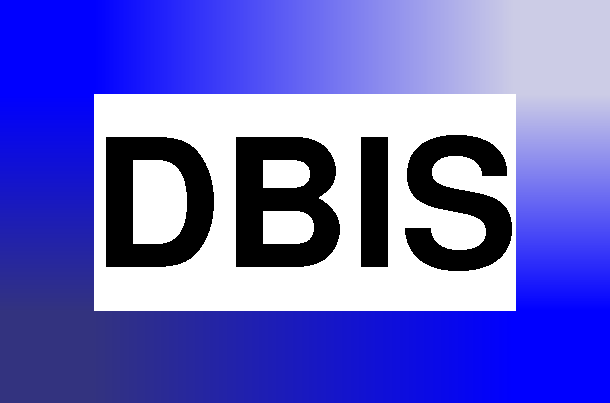Semistructured Data and XML
Summer 2004
Prof. Dr. Wolfgang May
Assistants: Erik Behrends,
Oliver Fritzen
Tutors/student assistants: Christoph Ratke, Philipp Wang
The course will prospectively be given in english (due to english-speaking
master students).
Date and Time: Wednesday 11-13 ct, Thursday 9-11 ct.
Lab (Übung): Friday 9-11 ct
Room: MN67
Note that in the first weeks, the friday slot will also be used for lectures.
Later, there will be theoretical exercises and practical hands-on exercises on
fridays.
9 ECTS-credits (Studies in Applied Informatics),
? credits (Studies in Wirtschaftsinformatik; Wahlbereich).
Course Description
One of the most important facts that lead to the overall success of XML
is that the "XML world" combines a lot of already known concepts in an
optimal way for coping with a broad spectrum of requirements.
The course will first review some of these preceding (partially even historic)
concepts (network database model, relational databases, object-orientierted
databases) and the integration of data and metadata (SchemaSQL). Then,
the idea of "semistructured data" is introduced by showing early
representatives that helped to shape the XML world (F-Logic, OEM).
In the main part, XML is presented as a data model and a markup-meta-language,
and the current languages of the concepts of the XML world are systematically
investigated and applied: DTD, XPath, XQuery, XSLT, XLink, XML Schema,
SQL/XML, RDF/OWL.
The lecture uses the geographical sample database "Mondial"
in its XML version for illustrations.
For practical exercises, a separate computer with XML software is
used. Further information can be found
here.
Dates & Topics
- 14.4.:
Administrativa, Overview, Introductory Presentation "XML".
[Slides 2-on-1]
[Slides 4-on-1]
- 15.4.: Introductory Presentation "XML" (cont'd).
- 21.4.:
Recall: the relational model.
Slides: Relational Model
- 22./23./28.4.:
Earlier database models, concepts and extensions:
Network data model, object-oriented databases, SchemaSQL.
Slides: early DB concepts
- 29.4.:
Early concepts of semistructured data:
Object Exchange Model (OEM), F-Logic.
Slides: SSD
- 30.4./5.5./6.5./7.5.:
XML: data model, language, DTDs etc.
Slides: XML basics
- 5.5.:
Exercise sheet 1: Introduction to XML tools
- 7.5., 11-13h:
optional Lab (NAM-CIP-Pool 5 (souterrain)): tutors will be present for
introductory practical experiments (XML/DTD, XHTML)
- 7.5.:
Exercise sheet 2: XPath Queries
- 12.5./13.5.: XPath: navigation and addressing language for XML
Slides: XPath
- 14.5.: Lab (first: discussion of theoretical exercises, MN 67; then
optional NAM-CIP-Pool 2: XPath)
- 19.5.: XPath (cont'd)
- [20.5.: holiday]
- 21.5. Lab (NAM-CIP 2): XPath
- 26./27.5.: The query language: XQuery, XUpdate
Slides: XQuery
- 19.5.:
Exercise sheet 3: XQuery
- 28.5. Lab: XQuery
- 2.6./3.6. [room: MN68] XQuery (cont'd.)
Exercise sheet 4: More XQuery
- 4.6. Lab: XQuery
- 9.6./10.6. The transformation language: XSLT
Slides: XSLT
- 11.6. Saalübung: discussion of sample solutions for
XPath/XQuery Exercises
-
Exercise sheet 5: xslt
- 16.6. XSLT (Cont'd)
- 17.6. Global referencing in XML -- the linking languages: XPointer and XLink
Slides: XLink
- 18.6. Lab: XSLT
- 23.6. XLink (Cont'd)
- 24.6. XML Schema
Slides: XML Schema
- 25.6. Lab: XSLT/XLink/XSD
- 30.6. XML Schema (Cont'd)
- 1.7. XML Schema (Cont'd), APIs: DOM/SAX
Slides: DOM/SAX
- 2.7. Lab: XLink+XSLT/XSD
Exercise sheet 6
- 7.7./8.7. XML Databases
Slides: XML and Databases
Exercise sheet 7
Further information on XML & DB can e.g. be found here:
- 9.7. Lab: Oracle & XML
- 14.7. Semantic Web: RDF/RDFS, OWL
Slides: Semantic Web (revised 17.7.)
Further information on RDF/OWL can e.g. be found here:
- 15.7. RDF/OWL (Cont'd), Finale: overview of other
applications (Web Service Languages etc.)
Slides: Finale
- 16.7. Lab (any remaining exercises, RDF)
- All slides of the lecture:
2-on-1,
4-on-1
(except the introductory talk:
2-on-1,
4-on-1)).
(slides can still change slightly - take the version that you printed
once for learning)
Evaluierungsformular:
[postscript]
[pdf]
(möglicherweise ist dieses auch auf der StudIP-Seite zur Vorlesung online
freigeschaltet --
ansonsten einfach dieses ausdrucken, ausfüllen, abgeben/unter der
Türe durchschieben etc)
Klausur: 27.7.2004, 10-12h (90 Min.),
MN 67
-
Anmeldung im Munopag erforderlich
Hinweise zur Klausurvorbereitung:
- Konzepte verstehen und beschreiben können, und wissen, wann man sie
wo anzuwenden hat; Vor- und Nachteile
- "Programmieren" auf Papier mit XML, DTD, XPath, XQuery, sowie den
XSLT-Grundkonstrukten; wichtigste XML Schema-Konstrukte
- keine Syntaxdetails zu XML Schema - hier sollte bekannt sein, was
man machen kann und wie man z.B. einen einfachen simple- oder complex-Type
erstellt (oder z.B. eine Instanz zu einem vorgegebenen Typ
validieren/angeben/korrigieren).
- Grundideen zu DOM/SAX, XLink, SQL/Oracle/XML, RDF/RDFS/SemanticWeb
verstanden haben und anwenden können
- "History"-Abschnitt: wissen, was die Knackpunkte der jeweiligen Konzepte
waren, und wie sie zur Entwicklung beigetragen haben, bzw. was man davon
prinzipiell in XML&friends wiederfindet.
- Es können auch Aufgaben kommen, wo eine Text-Antwort erwartet wird:
keine Romane mit zuvielen Details schreiben. Kurze, knappe Antwort,
Aufzählung etc ...
|
